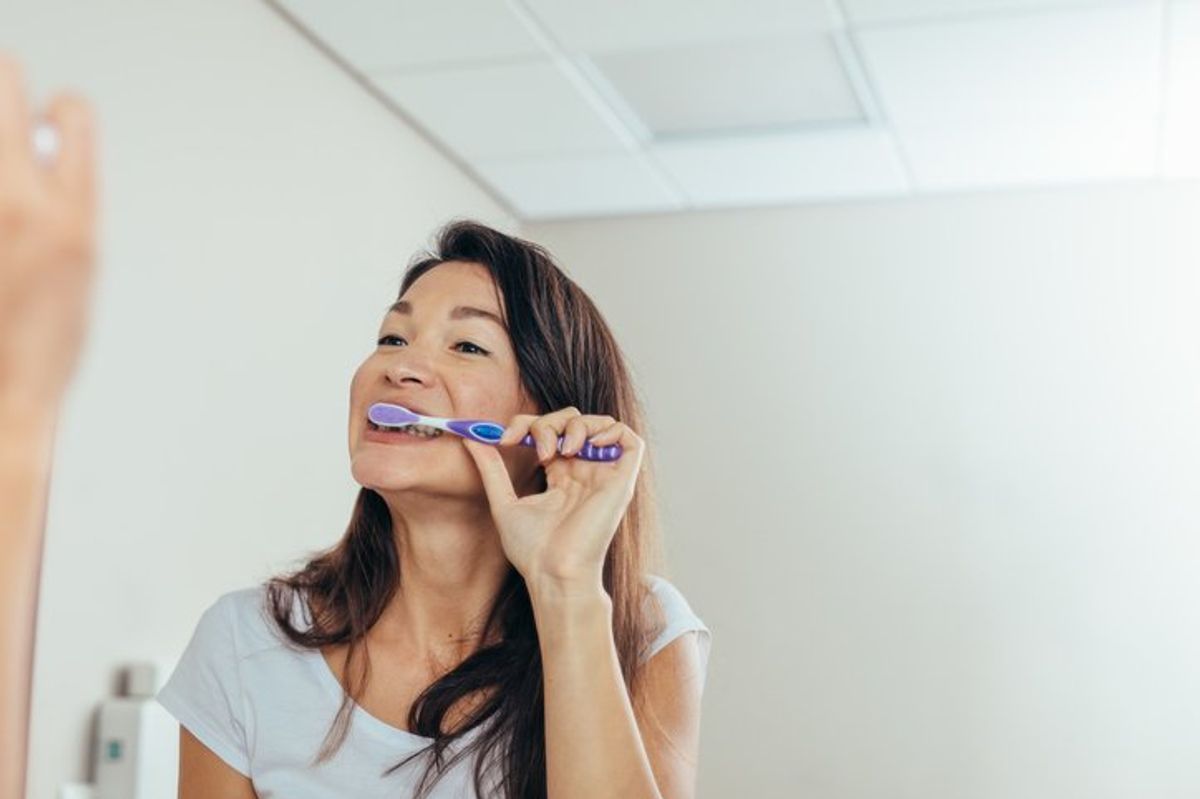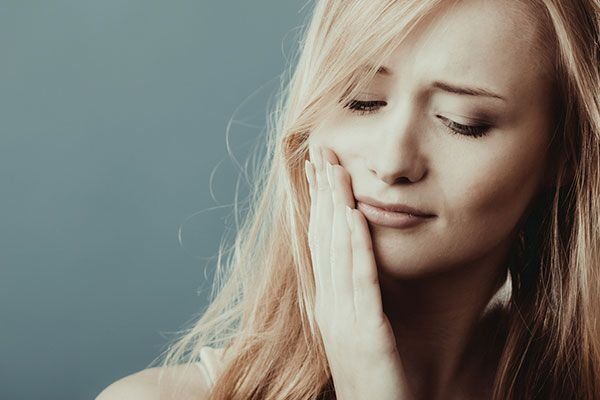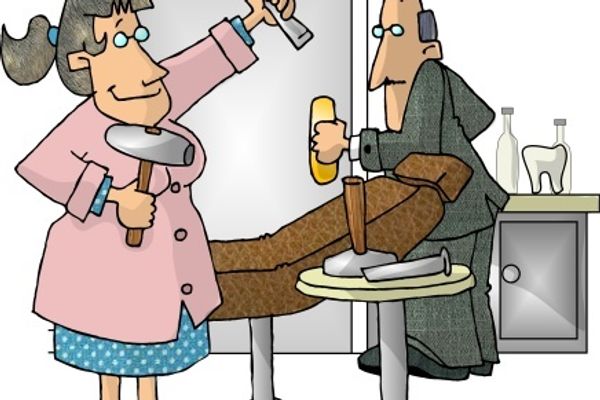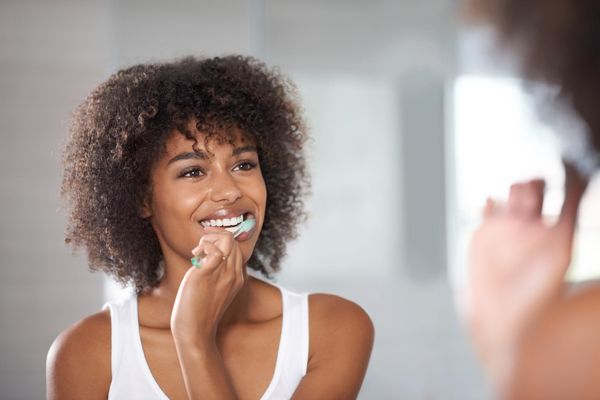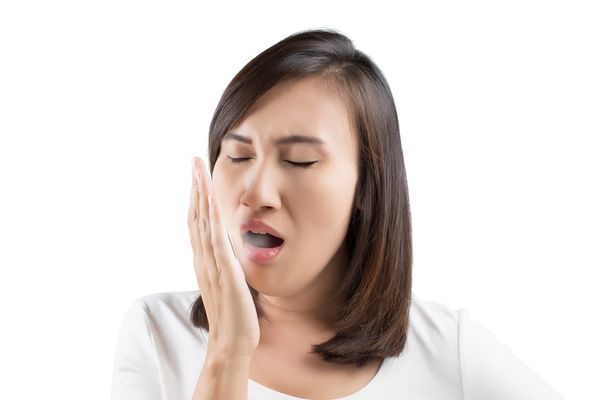We all know that oral hygiene is important for keeping our teeth healthy and our smile beautiful. But, sometimes, life gets in the way and it’s easy to skip dental visits or forget about flossing — in fact, one analysis found that only three in 10 Americans floss every day.
Our dental health is about more than just what our teeth look like — it can also affect our overall health.
“The mouth is home to over 700 species of bacteria. Without good oral healthcare, bacteria levels grow and lead to oral infections such as periodontal disease and tooth decay,” said Seema Bonney, M.D., founder and medical director of the Anti-Aging & Longevity Center of Philadelphia and member of Healthy Women’s Women’s Health Advisory Council.
Infection, especially gum disease, can affect several other diseases, including cardiovascular disease, bacterial pneumonia, diabetes and low birth weight. And nearly half of Americans over age 30 have some form of periodontal disease, according to a Centers for Disease Control report, and it’s among the most common chronic diseases along with diabetes and cardiovascular disease.
The connection between oral health and overall health
To understand why oral hygiene is so important and how oral health can affect overall health, first you need to understand what’s happening in your mouth.
When you eat throughout the day, a sticky film that’s full of bacteria, called plaque, builds on your teeth and under the gum line. If plaque isn’t removed by daily brushing and flossing, it will turn into tartar, a hardened white buildup that develops at the gum line and can cause cavities and gum inflammation. Early on, this gum inflammation is called gingivitis. If it’s not addressed, gingivitis will progress to periodontitis, or gum disease, an infection that can damage the soft tissue of the gums and cause bone loss and, eventually, tooth loss.
But it doesn’t stop there. There’s a link between gum disease and heart disease, and people with gum disease are two to three times more likely to have a cardiovascular event, such as a heart attack or stroke. Severe gum disease can triple the mortality risk in people with Type 2 diabetes and also make chronic obstructive pulmonary disease and rheumatoid arthritis get worse more quickly. Gum disease can also lead to poor pregnancy outcomes, including maternal infection, preterm birth, low birth weight and preeclampsia
Poor dental hygiene can even affect your brain: A 2020 study published in the Journal of Alzheimer's Disease suggested that the bacteria that cause periodontal disease are also associated with dementia, including Alzheimer's disease.
Researchers looked at 19 different types of oral bacteria and a diagnosis of Alzheimer's or vascular dementia. Porphyromonas gingivalis, a type of oral bacteria, showed up the most in that group of 19 to cause gum disease, and this bacteria has also been found in the brains of people with Alzheimer’s.
Additionally, a 2022 study published in the Frontiers in Aging Neuroscience journal found that another bacteria type that occupies and multiplies in patients with gum disease, causes inflammation that can affect nervous system tissues and can reduce memory and thinking skills, making the symptoms of Alzheimer’s disease worse.
“It has also been suggested that beta amyloid plaques, the hallmark of Alzheimer's, may be created as a response to [gum disease],” Bonney said.
While these studies show associations between gum disease and other diseases, the exact link hasn’t been pinpointed. But gum disease is a chronic inflammatory disease, and chronic inflammation and the immune response to it are associated with a number of diseases.
“Bacteria and the inflammation they create travel through the bloodstream from infections in the mouth to the brain,” Bonney explained. “It can both cause chronic disease and exacerbate it.”
Risk factors for gum disease and tooth decay
Anyone can be at risk for gum disease and tooth decay if they don’t practice good oral hygiene, but some people need to be even more careful about their dental health and wellness because of risk factors.
“Obviously, smoking is a big risk factor,” Bonney said. “Pregnancy is also a risk state — statistics show that 60 to 70% of pregnant women have gingivitis due to hormone fluctuation during pregnancy. Another at-risk group is people who use meds that reduce saliva in the mouth. And in some cases, your genetics put you at risk. According to the American Dental Association, if your family has a history of gum disease, that makes it more likely that you will too.”
If you fall within these risk categories, you may want to spring for more professional dental cleanings beyond the generally recommended twice-a-year regimen, said Corina Layton, a registered dental hygienist based in Savannah, Georgia, who has developed a huge following on TikTok sharing her hygiene tips.
How to improve your oral hygiene
Layton recommends brushing twice a day, and flossing at least once a day before bed. For people with high risk, she recommends adding an optional brushing and flossing session after lunch.
“I always recommend a rechargeable electric toothbrush, and just letting the brush do the work,” she said. “I also love water flossers because they go even farther underneath the gum line and between teeth, as well as fluoridated mouthwash that helps reach so many more parts of your teeth and kill bacteria.”
Not all of the bacteria in your mouth is bad, and supporting the good bacteria may aid in the fight against gum disease.
“Lactobacillus is a major part of the [oral] microbiome and can help to fight many kinds of bad bacteria. If you are genetically inclined to gum disease or have been diagnosed with gingivitis or periodontal disease, it's a good idea to supplement with lactobacillus,” Bonney said, pointing to a study that showed reduced gingivitis in participants who chewed a lactobacillus gum daily for two weeks.
Layton also suggests paying attention to what you’re drinking and when you’re drinking it. Avoid acid beverages such as coffee, soda or wine and brush your teeth about an hour after drinking.
“It takes 45 minutes for your mouth to return to its normal pH level,” Layton said. “So make sure you swish water after drinking these beverages and give your mouth the chance to normalize before you brush your teeth. Otherwise, you're essentially going to be eroding your teeth over the years because of the acidity.”
If you spot tartar, it’s time to make a dental visit because tartar typically needs to be removed by a professional with handheld tools. Be on the lookout for other signs that your gums are less than happy and healthy.
“When you start to see blood [when you brush or floss], you're having tenderness, your gums are not a pale pink but are more like a reddish/dark pink color and they’re looking shiny and kind of puffy, those are signs of gingivitis,” Layton said. “It’s time to see your dentist before things get worse.”

